August 2022 marks 10 years since Curiosity, one of the most advanced planetary rovers ever launched, landed on Mars.
For a decade the car-sized wheeled robot has been studying the climate and geology of Mars in preparation for human exploration and helping to answer questions about Mars’s past suitability for life.
But its launch was repeatedly pushed back as NASA faced many delays. Finally, on 26 November 2011, the mission clock began as an Atlas V launched the rover from Cape Canaveral Air Force Station.
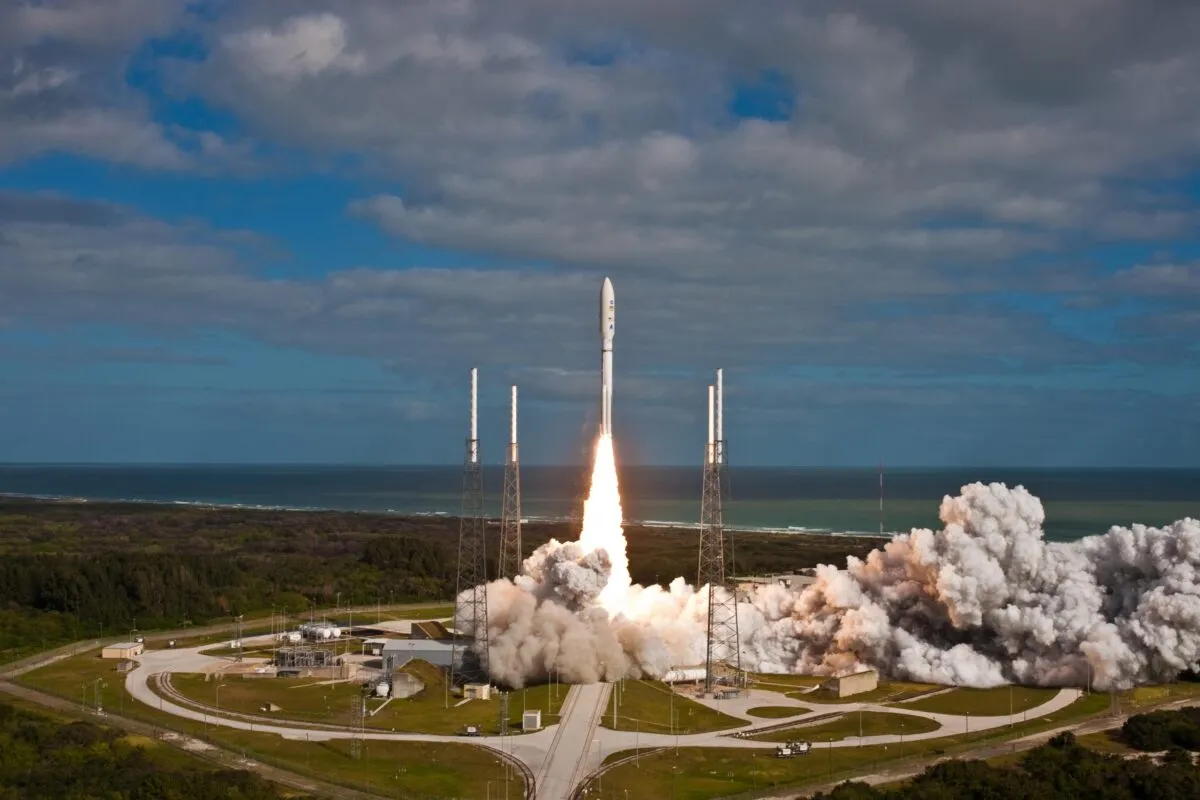
The selection of Curiosity’s ultimate destination on the surface of Mars had begun in June 2006, when an international group started to whittle down 100 potential landing sites to just one.
By June 2011 the 154km-diameter Gale Crater had finally been chosen for its exposed layers of sediments, thought to be left by the water of an ancient lake.
Curiosity’s landing eventually came on 6 August 2012, and was aimed at the tightest landing ellipse of any mission to date.
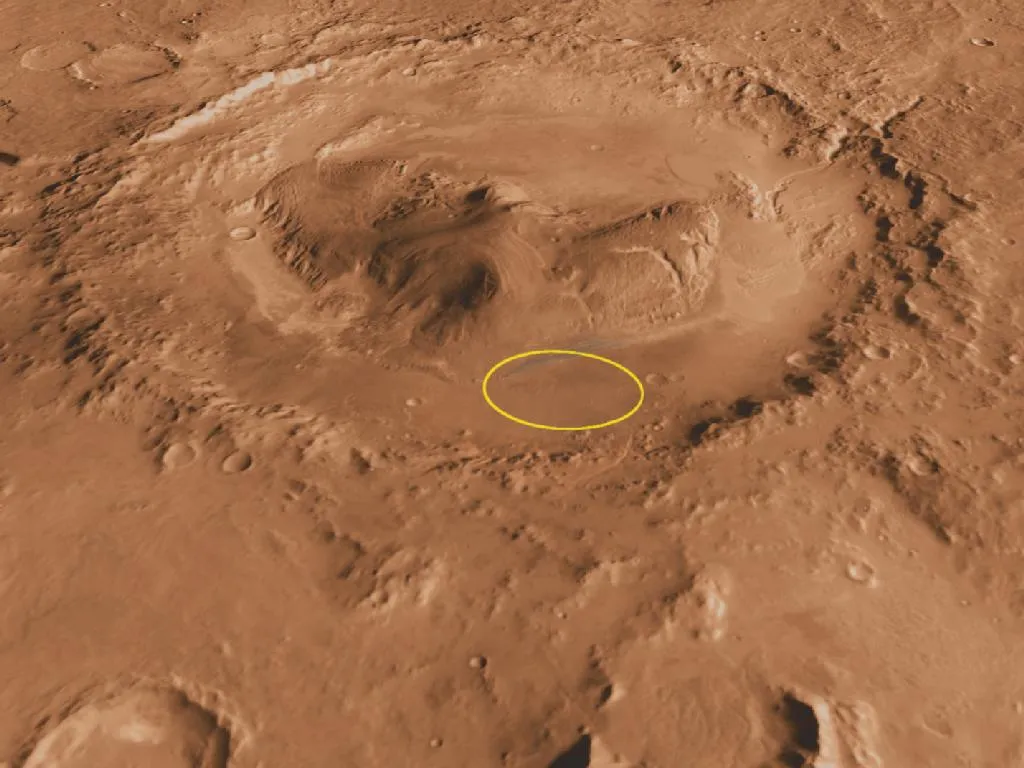
The Spirit and Opportunity rovers’ landings had been within a predicted area of 150 x 20km in 2004; Curiosity was to narrow that down to just 7 x 20km.
To achieve this, the craft had to slow down by a factor of around 10,000, from a relative approach velocity of 21,000km/h to a slow walking pace of just 0.75m/sec at touchdown – no easy feat for a rover 3m long by 2.8m wide, with a mass of almost 900kg.
How Curiosity landed on Mars
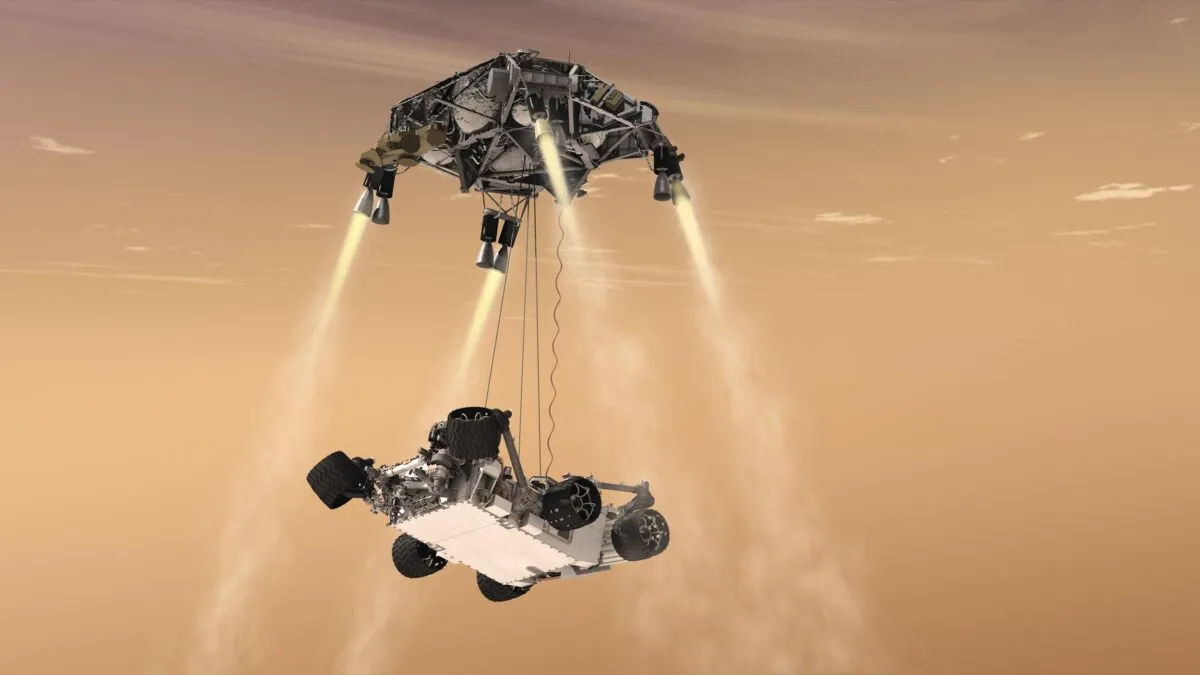
Curiosity’s mission planners took a novel approach to landing, describing it as either ‘the least crazy’ solution or the ‘seven minutes of terror’.
This began when the sparse Martian atmosphere started to brake the craft at an altitude of approximately 125km, then at 11km a supersonic parachute deployed, reducing the speed of descent to 322km/h.
So far so good, but next came the novel approach: an autonomous, eight-rocket Sky Crane was to hover 35m above the surface and gently lower Curiosity on three nylon cables.
The concept worked perfectly and the cables released so the Sky Crane could fly off, crashing a safe distance away.
Curiosity rover's scientific instruments
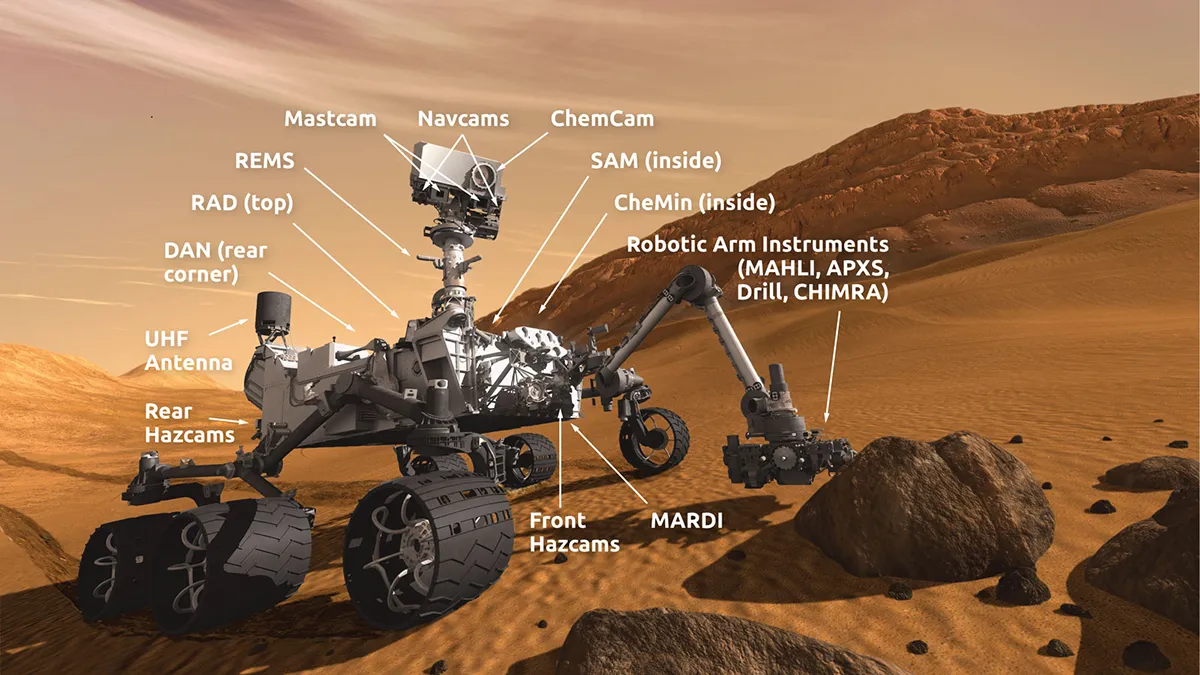
Ever since, NASA has had Curiosity’s 17 cameras on Mars’s surface for scientific observations and investigation, including the Mast Cam, which stands 2m high and has provided spectacular panoramas.
Curiosity’s instruments are also equipped with solar filters which have allowed it to take images of the moons Phobos and Deimos as they partially eclipse the Sun.
The rover also has a 2.1m, triple-jointed robotic arm to prepare and examine samples.
Ending in a turret that rotates, it carries a drill, dust removal tool, X-ray spectrometer and the Mars Hand Lens Imager, which works just like a magnifying glass would for a geologist on Earth.
Its radiation detectors record exposure to energetic particles and are used to detect liquid or frozen water underground.
What has Curiosity discovered on Mars?
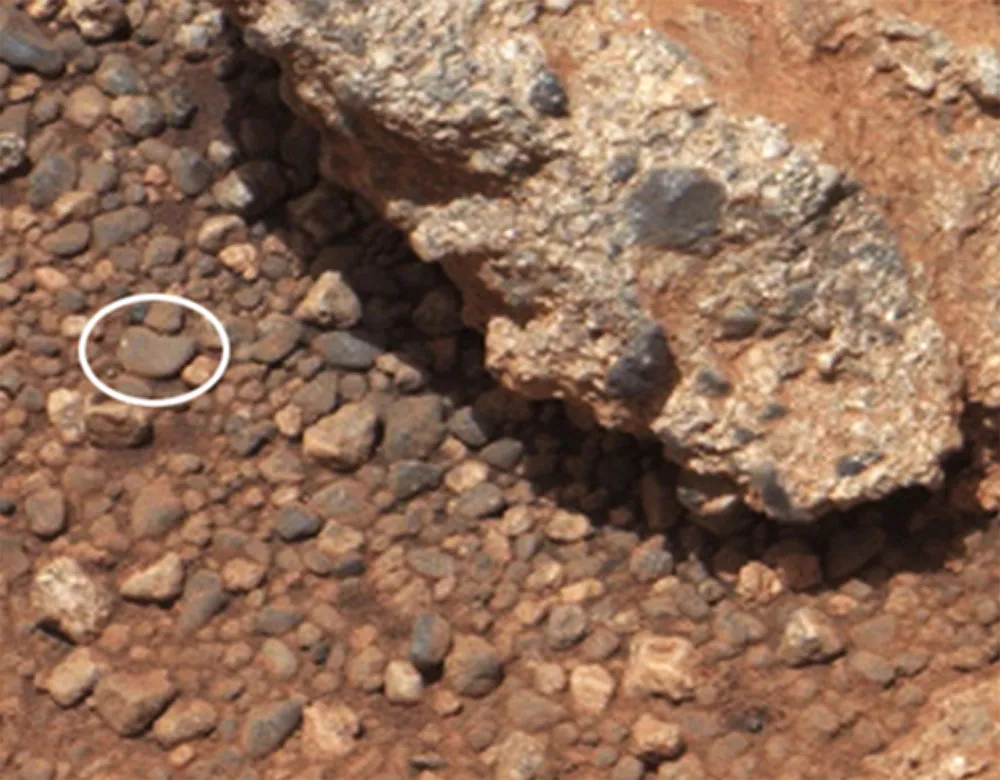
Planned to last two years, Curiosity quickly fulfilled a main mission objective by finding rounded pebbles, showing that liquid water had been present for a significant period in the Red Planet’s past.
It has also found evidence of the chemical building blocks for life, as well as organic carbon and tantalising seasonal changes in the levels of methane, which is quickly lost to space.
Methane is often associated with biological processes, although there are other possible explanations.
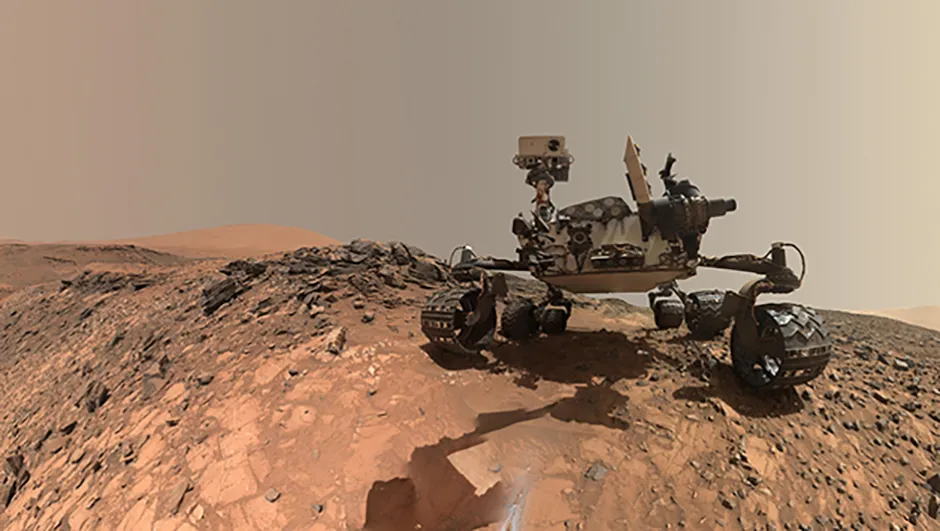
Having driven more than 28km and explored Gale Crater at a maximum speed of 4cm/sec, today Curiosity’s mission has been extended indefinitely and it continues to climb Mount Sharp, analysing exposed sediment layers on the way.
There are signs of excessive wear on its front and middle wheels but, as Curiosity uses a nuclear power source that could drive its systems for more than 50 years, the rover could be operating for a long time to come.
Curiosity's legacy in Mars rovers
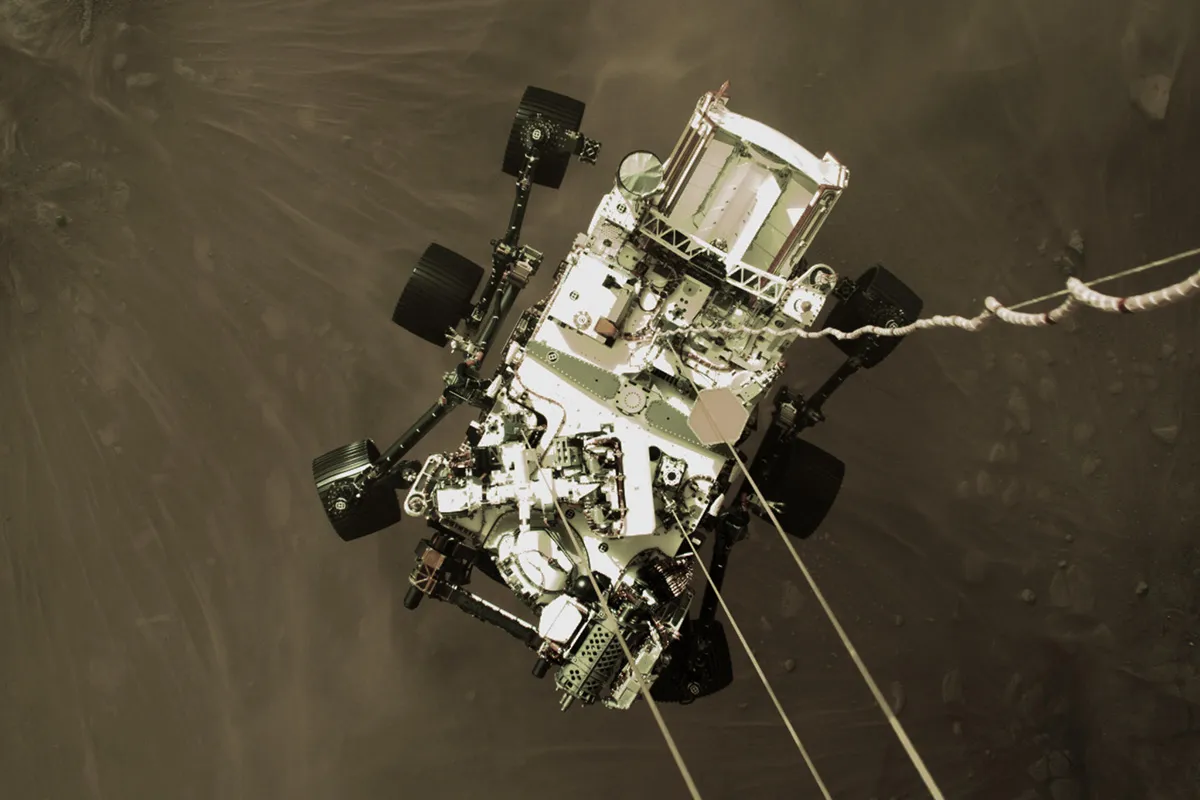
So successful is Curiosity’s design that it was used as the basis of a later NASA Mars rover, Perseverance.
Also exploring Mars looking for evidence of past life, Perseverance carries upgraded instruments and is collecting samples, leaving them cached in tubes ready for collection by a future sample-return mission.
Launched on 30 July 2020 and landing on 18 February 2021, the mission used the same Sky Crane landing profile as Curiosity.
The rover is a little more massive than its predecessor, weighing in at 1,025kg on Earth (which is reduced by around a third in Mars’s gravity), but has similar dimensions of 3m long and 2.75m wide.
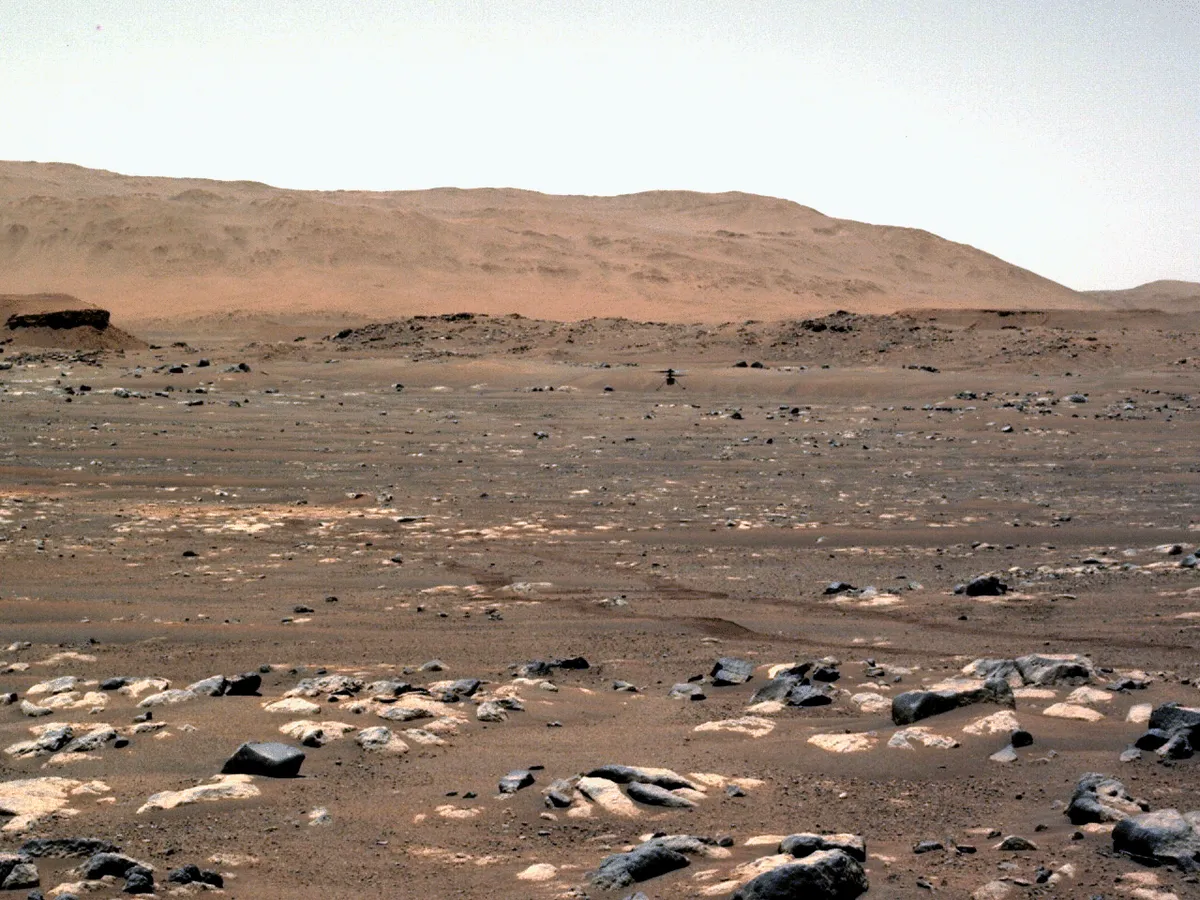
Perseverance also carried another craft, the Ingenuity helicopter. When it rose vertically from the surface and hovered for 39 seconds on 19 April 2021, it made history by being the first powered flight on another planet.
It was hoped Ingenuity would provide data from five test flights, but as of April 2022 it has completed 28 flights, covered 6.9km, and spent over 54 minutes in the air, reaching altitudes of 12m and speeds up to 20km/h.
This article originally appeared in the August 2022 issue of BBC Sky at Night Magazine.